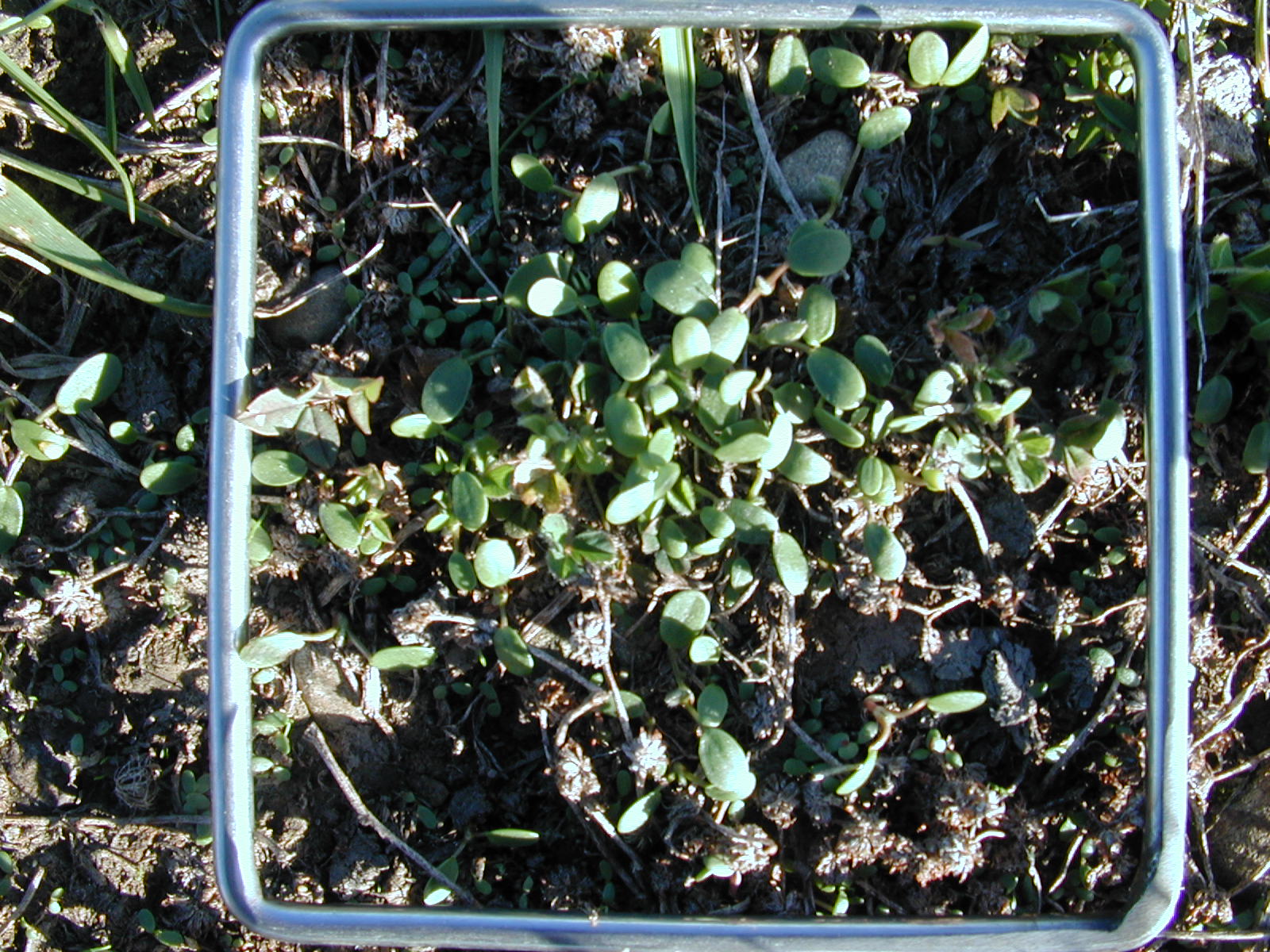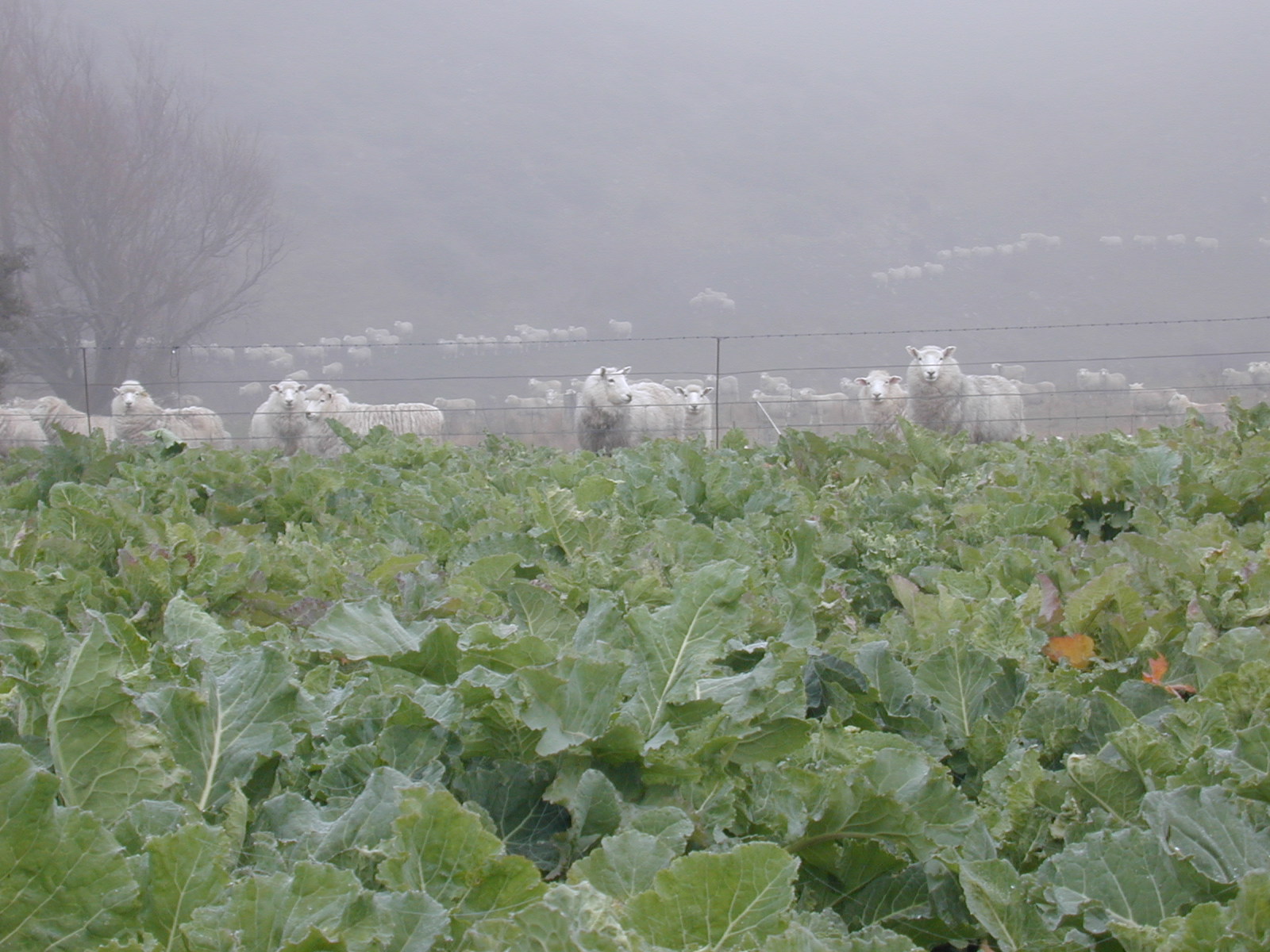Posted on behalf of Dr Derrick Moot (Professor of Plant Science, Lincoln University)

The summer of 2012/2013 is one of the driest on record for North Island farmers and many in the South Island. Recent rain in some places makes decisions on what to graze, and when, crucial. The ideal grazing response will depend on the amount of rainfall received, which has differed across the country, and the pasture type it has fallen on.
Rainfall of 0 – 10 mm is unlikely to induce any pasture response from grass pastures or lucerne. If it is not followed by further rain within a week it is likely to evaporate from dry soil. It will assist forage crops that have survived the summer or been sown after a fallow but only for about a week. It is insufficient to cause Sub clover to strike. A follow-up rain in the next 7-10 days is needed for this amount of rainfall to be useful. Fingers crossed!
Rainfall of 20-30 mm within a week is required to get dormant dry grass-based pasture growing again. If you have this amount then the temptation is to give the ewes a green pick as soon as possible once paddocks show signs of life. However, chose those paddocks to graze carefully. Preferably stay off as many paddocks as possible and continue feeding out until the leaf area has expanded to at least 2 green leaves per tiller on grasses and 10-15 cm stem height on lucerne. If you do need to graze, try to use a slow rotation so continue with supplements to allow the pasture to grow as much as possible. When water is not limiting the growth rate in March is usually twice that of April, and April is twice that expected in May. The aim in autumn is to get a canopy of green leaves on crops or pastures closed (so the crop is intercepting >95% of the incoming solar radiation) as soon as possible. This allows them to continue to grow through late autumn and into winter. Declining temperatures means leaf appearance and extension rates slow. Therefore, the green area for capturing light takes longer to recover as we go later into autumn. We need that canopy of leaves covering the ground before the winter cool reduces leaf extension. Grazing your whole farm once over lightly now will set up a more desperate situation in winter so think carefully about which paddocks to graze and where stock will go in winter.
For those lucky enough to have had more than 40 mm of rainfall your whole farm should show signs of recovery relatively quickly. If you have the option, this early autumn rain offers an ideal opportunity to spray browntop with a translocatable herbicide like glyphosate. Autumn is the best time to kill browntop, Californian thistles and any other rhizomatous weeds (couch/twitch). Clean-up these weeds in preparation for new pasture or lucerne in spring.
For lucerne, the rainfall is likely to spring the crop back into life. Ideally this rain will be followed by others that will allow the crop to flower or have 6 weeks of active growth during autumn to recharge underground reserves. If it is the only feed you have this fresh young lucerne can be used for flushing and tupping. See our previous blog post for details. If you’ve had more than 20 mm rain then lucerne can become lush again and fibre and salt may be required as they were in spring to reduce the possibility of red gut. If you can spell paddocks now is an ideal time to allow them to go to flower or have a long regrowth spell.

For Subterranean clover, the autumn rain has come at an ideal time following a hot summer. The hot dry soil is ideal for Sub clover compared with last year when the continued rain favored white clover in many areas. Expect a flush of Sub seedlings if overcast conditions persist for a week. Check the ground carefully and look for a mass of seedlings with big cotyledons that will need to be nurtured. They have the potential to grow more feed during the winter than grass and provide excellent pre-lambing and lactation feed. This should be a bumper year for Sub so if you want to build up your reserves of Sub clover in the seedbank this is the year to manage their emergence. Wait until the new seedlings have 5-6 trifoliate leaves before autumn grazing and then graze to remove the grass competition to set Sub clover up for late winter growth. At this time of year it should take about a month from the first sign of seedlings. Target particular blocks that you want to increase the Sub population on and ensure they get priority. For more information see the presentation from David Grigg on our website (www.lincoln.ac/dryland presented on 18 Jun 2012). If you want to increase your Sub clover content now would be an ideal time to overdrill 10 kg/ha into established pastures. Once the Sub has 5-6 leaves graze the grass to reduce the competition. Keep an eye on emerging seedlings for sign of grass grub and other pasture pests.
Use of nitrogen: If you’ve had no rain yet – with none in the forecast – some N in April may be appropriate to aid grass growth to lift covers going into winter. Some nitrogen going into winter can also assist grass growth. It is unlikely that nitrogen fertilizer is required to stimulate growth on paddocks that have been used to feed out on. The soil temperatures are still comparatively high and high concentrations of nitrogen from urine returns and mineralization in paddocks which had a good clover content will make N available for plants to take up. If you’ve had rain and day temperatures are still in the high teens soil mineralization will be high on pastures that had high legume content. On pastures with low legume content nitrogen may be used to break down the thatch.

Got questions?? Leave us a message & we’ll see what we can come up with!
Update: Comments are now closed on this post. Please visit the Contact Us page of the Dryland Pastures Website if you have questions.
